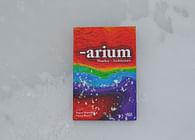
Porto Brandão is a picturesque coastal town that is opportunistically located within industrial routes of the Tejo River. This dialectic of regional industrial routes pushes up against the natural geographic beauty of this town, its monuments, and growing university. One of the difficulties in a comprehensive planning strategy in Porto Brandão is not just this tension between scales of industry but also the complex topography that has naturally caused a polynuclear distribution of built form in pockets of consistent terrain within the city. Instead of an approach of unification, this proposal adopts of strategy of first disconnecting these islands only to reconnect them in a precise manner.
Disconnection
The act of disconnection, allows each of these islands to realize its ‘almost’ project into an ideal state. A series of strategies are employed to create clear boundaries for each islands — through topography, landscaping, and in select areas, architectural form. By creating a limit on each island, a legible entity emerges that can clarify its own unique identity.
Connection
After the act of disconnection, two systems of reconnecting the islands are employed. The first utilizes a cable car system to create a comprehensive method of moving through the city and its complex terrain. Each stop connects to an existing island, with one new additional station proposed — a ferry terminal located in the port. The towers for the gondola stations not only serve as access, they create a series of territorial nodes that provide an overall legibility and wayfinding mechanism through the city, while enhancing the city’s pluralistic identity. The towers also provide the opportunity for new programmes —new residences for university-affiliated scholars, hotels, restaurants, parking, observatories and transport hubs, such as the ferry terminal. This consolidates density and new growth at locations that are opportunistically located within the transport network and protect the natural landscape from sprawl. Lastly, these towers act at a scale in concert with the majestic surrounding landscape, reframing the relationship between artificial and natural structures within the city. The second mechanism of connection involves the existing series of fragmented paths through the city. These paths typically fragment in regions of dramatic topographic changes. The towers are placed to not only touch on an island and connect the gondola network, but also to fill in strategic gaps within the existing networks of paths, to create a comprehensive system of moving through the city both on land and in the sky.
Constellation
The project is made up of two networks for movement through and above the city that use the structural towers as programmatic condensers that provide both an identity to each individual island, and as a collective, provide a new identity to the pluralistic city. As an aggregation, the gondola network structures the city through a territorial constellation. As the stars in this constellation can be read in different ways, forming a series of figures, with an overall figure of the Portuguese “Sardinha” which is always visible from the sky.
By having a territorial constellation, the diverse identities of Porto Brandão are unified and provide a legible mental and physical framework for the city. New nodes can be added to the city in time, with an acknowledgement of the city’s polynuclear structure due to topography and competing identities. Each new development would be structured not as an isolated island, but rather one that links into the existing path networks and gondola system.
Status: Competition Entry
Location: Porto Brandao, Portugal
Firm Role: Design Architecture Team; Joint Venture
Additional Credits: Offices: The Open Workshop & Lorena Del Rio Architects
Team: Neeraj Bhatia, Lorena Del Rio, Carly Dean, Alicia Hergenroeder, Jonathan Negron, De Peter Yi, Wei Zhao



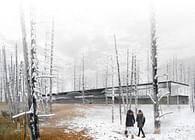
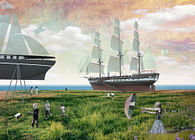

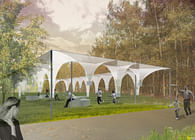
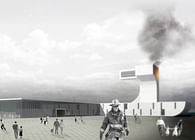



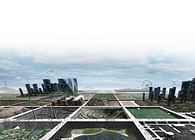
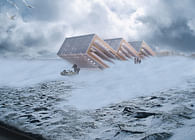
![Bracket [Goes Soft] Bracket [Goes Soft]](https://archinect.gumlet.io/uploads/fh/fhcvzt2j1lysvlgm.jpg?fit=crop&auto=compress%2Cformat&enlarge=true&crop=entropy&w=195&h=140)
